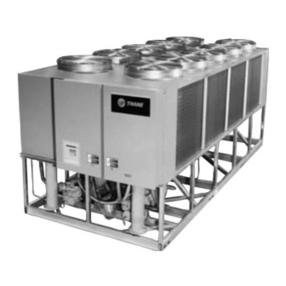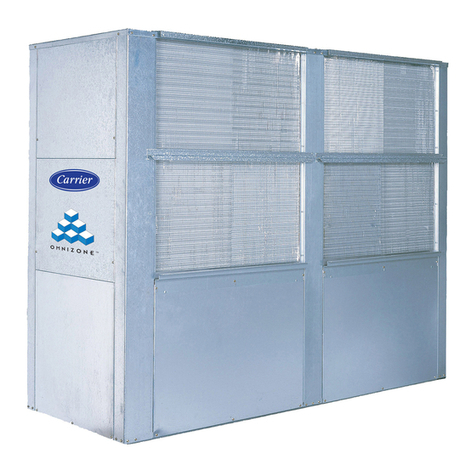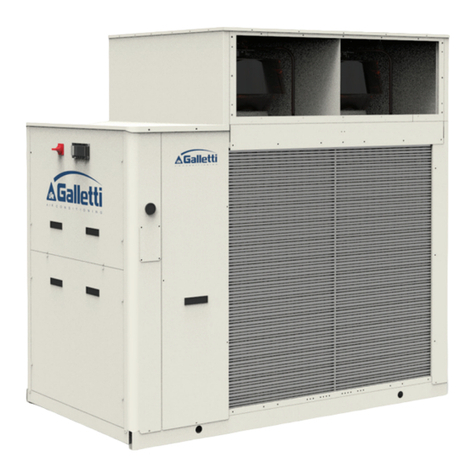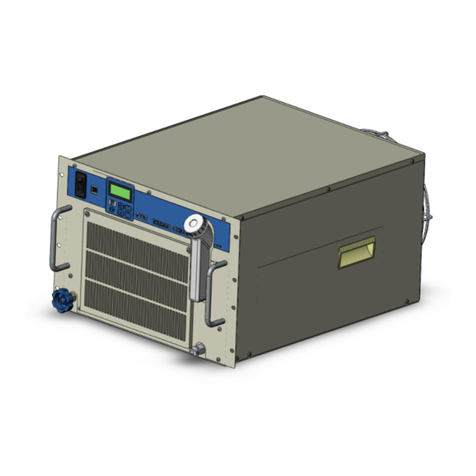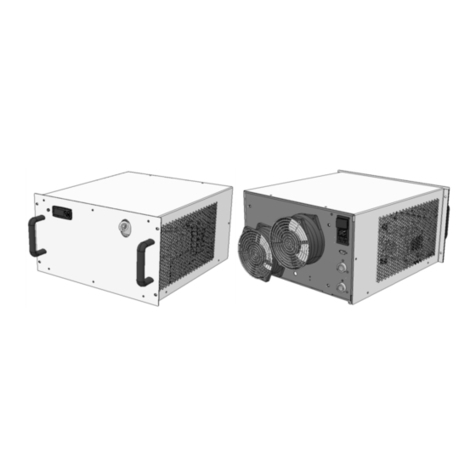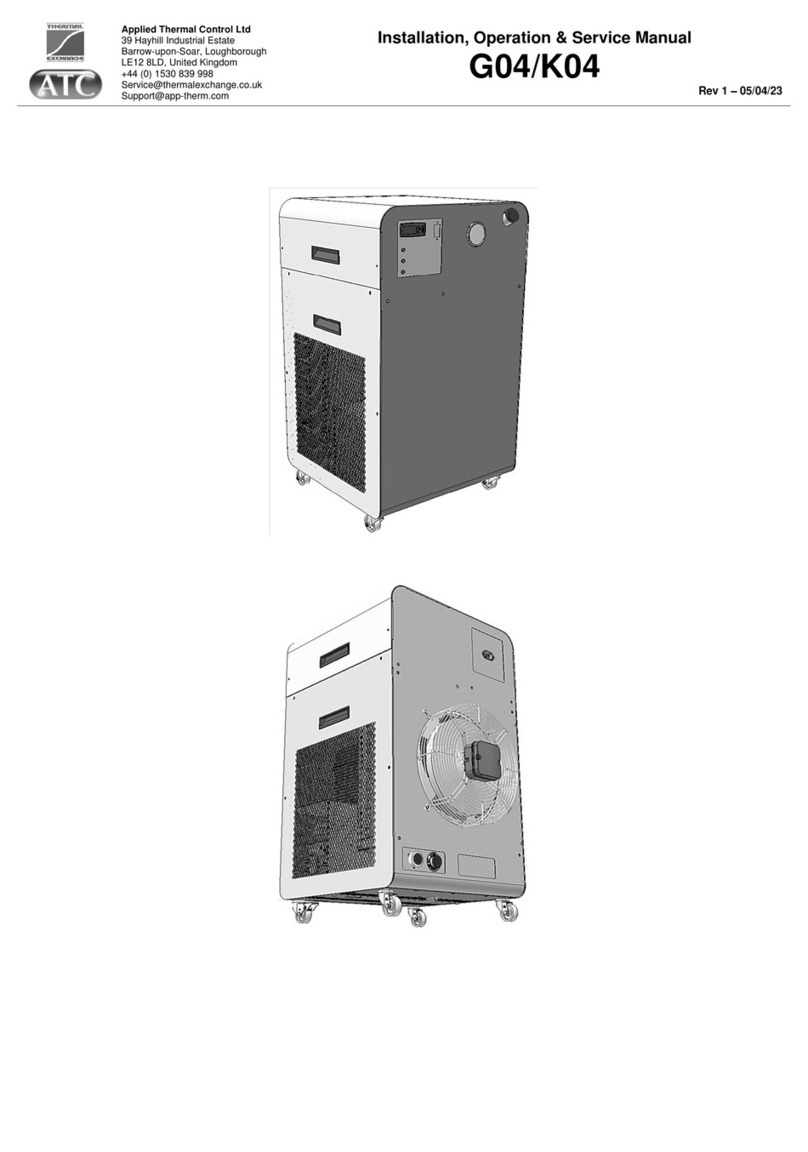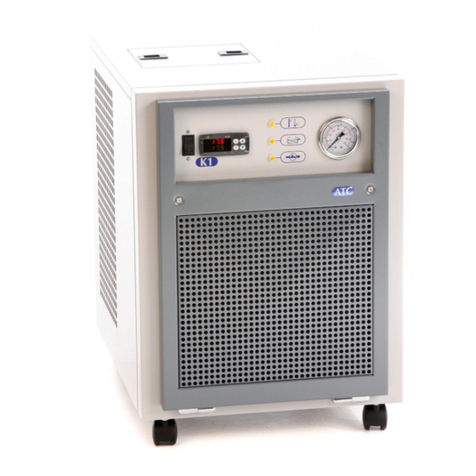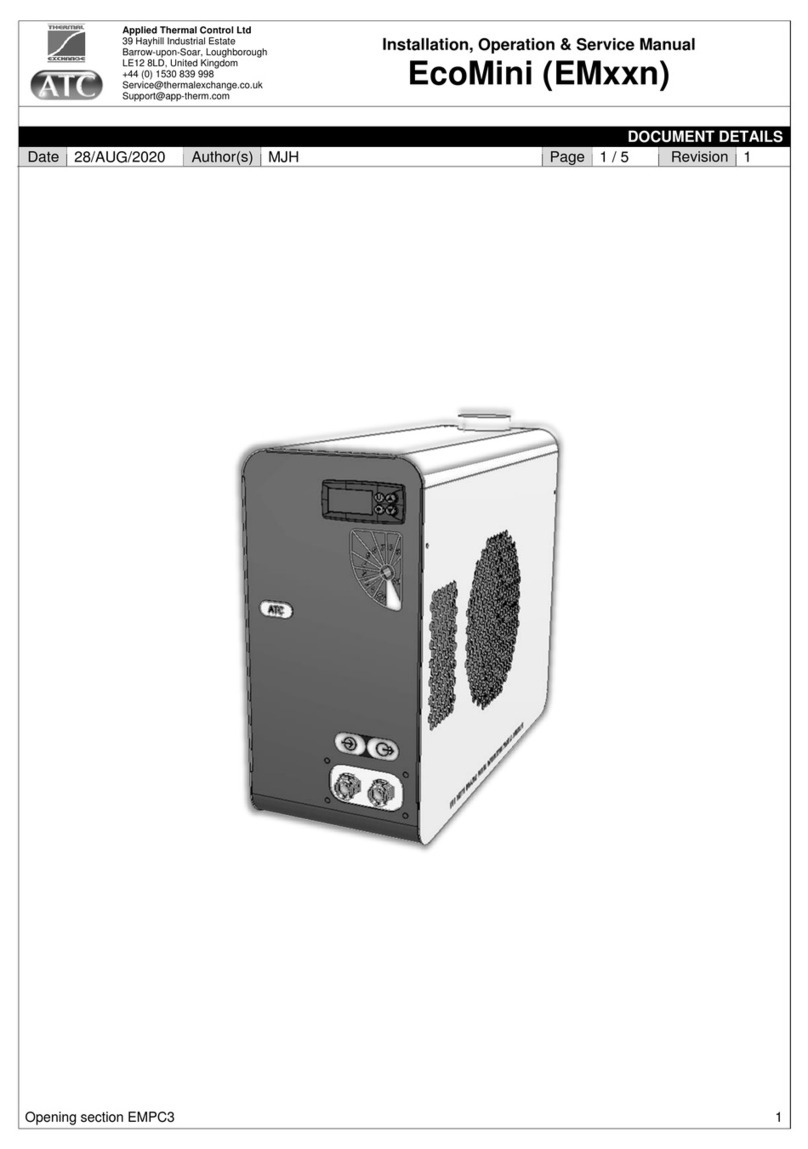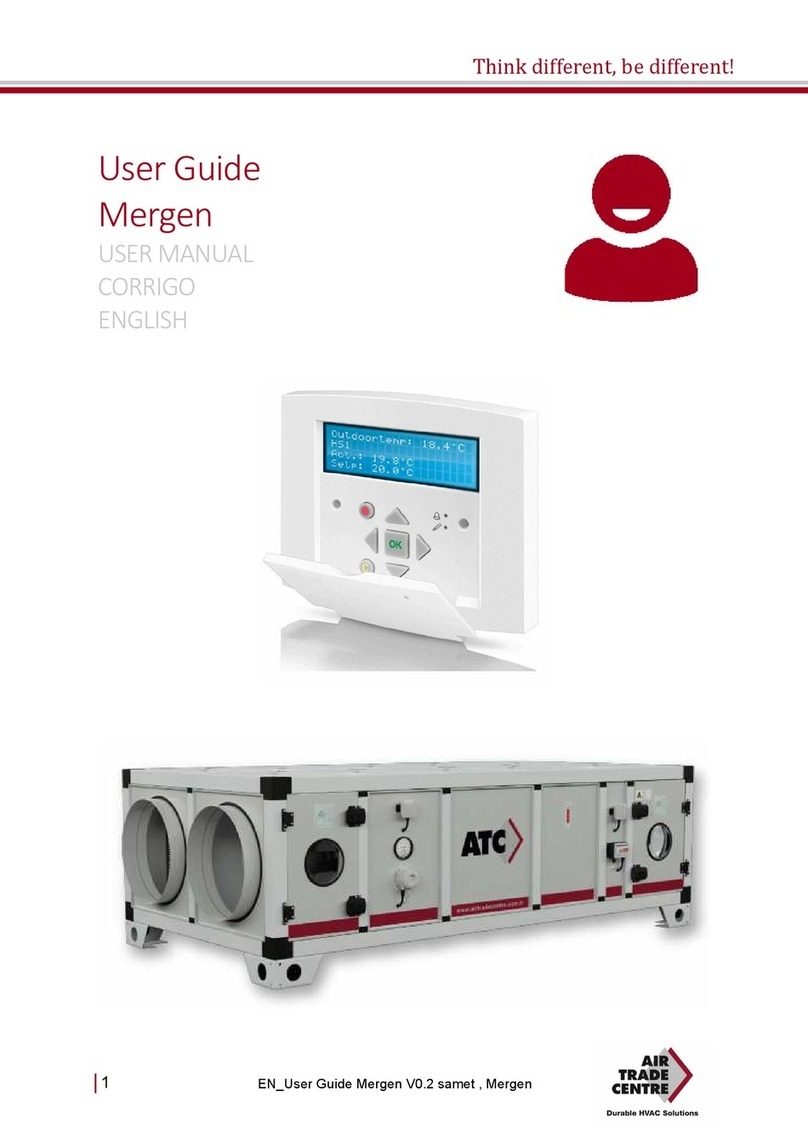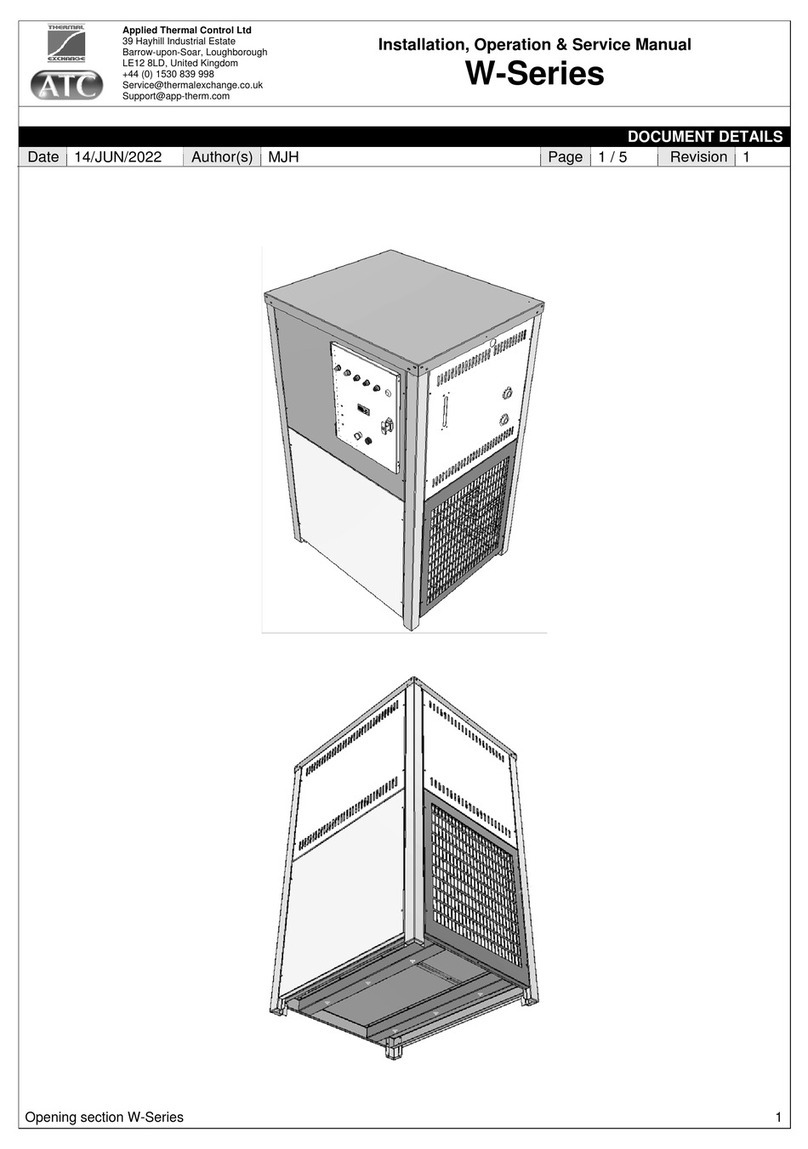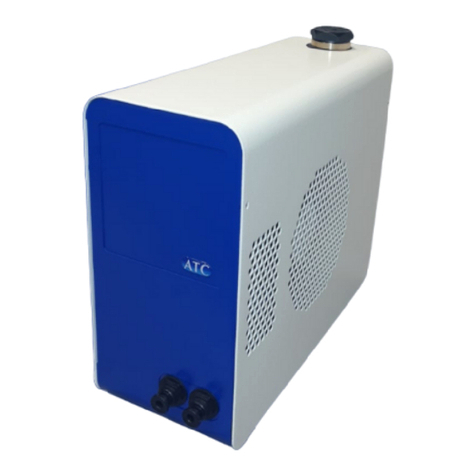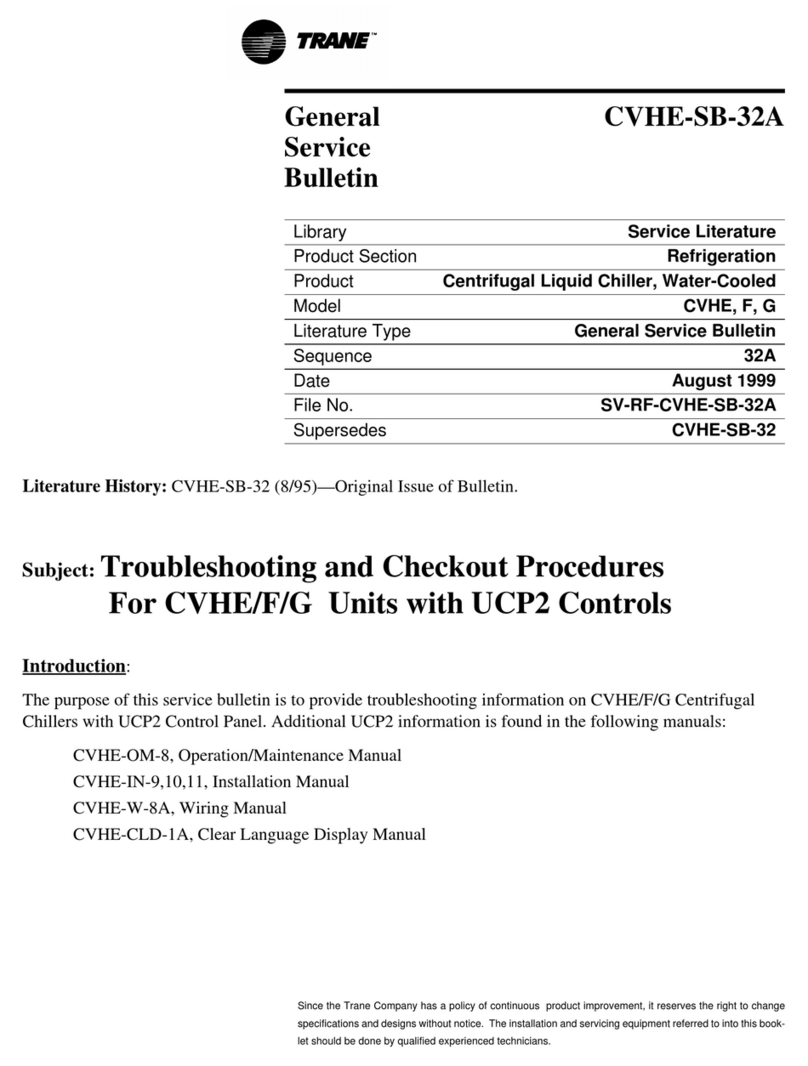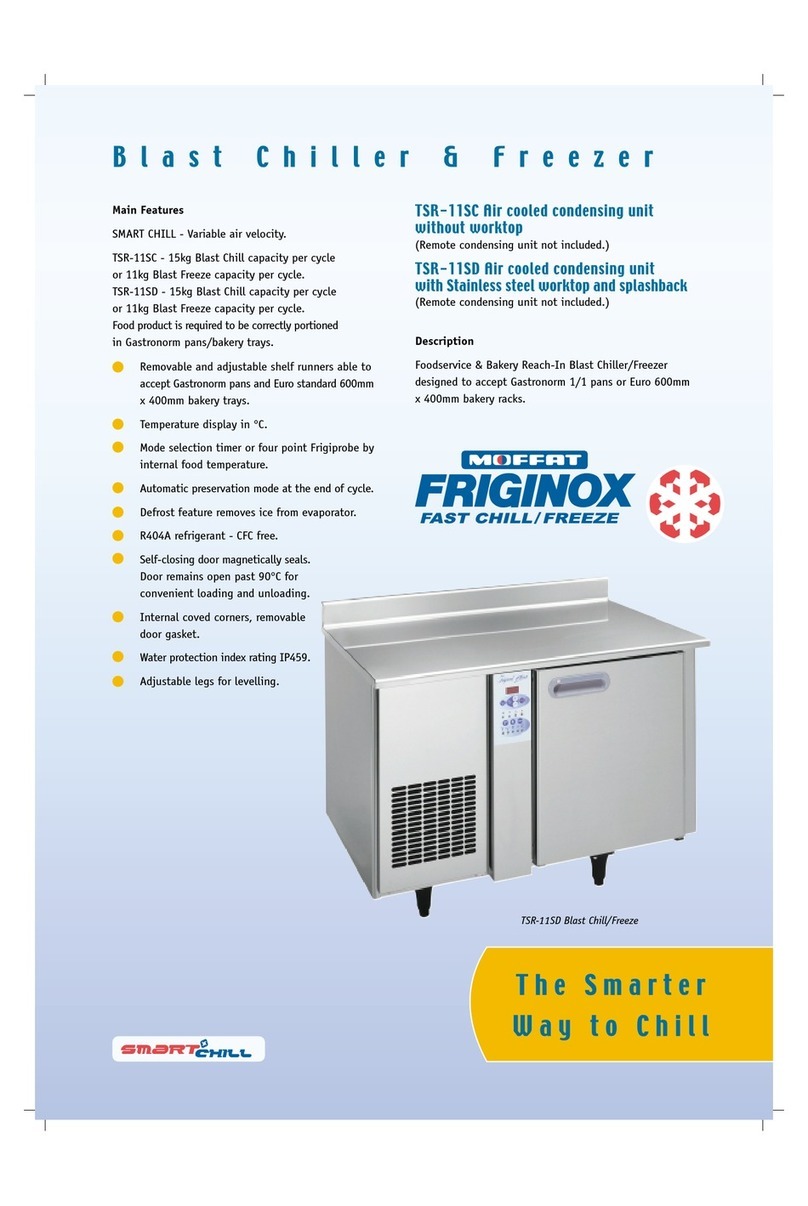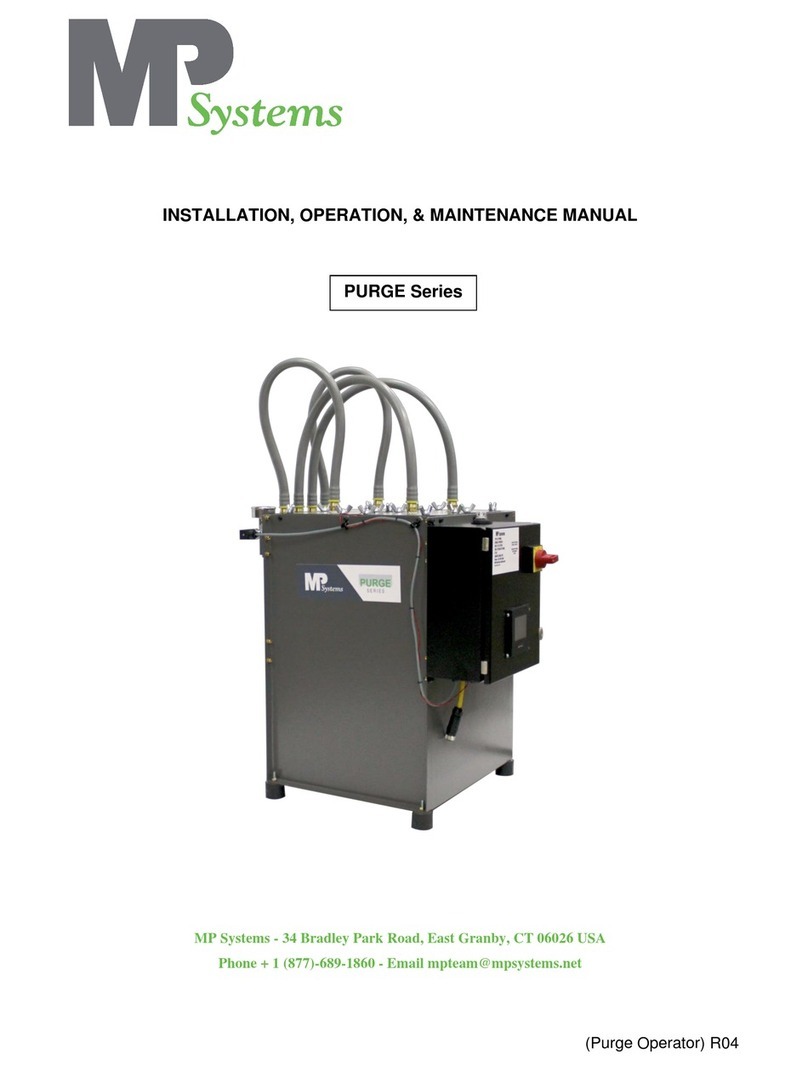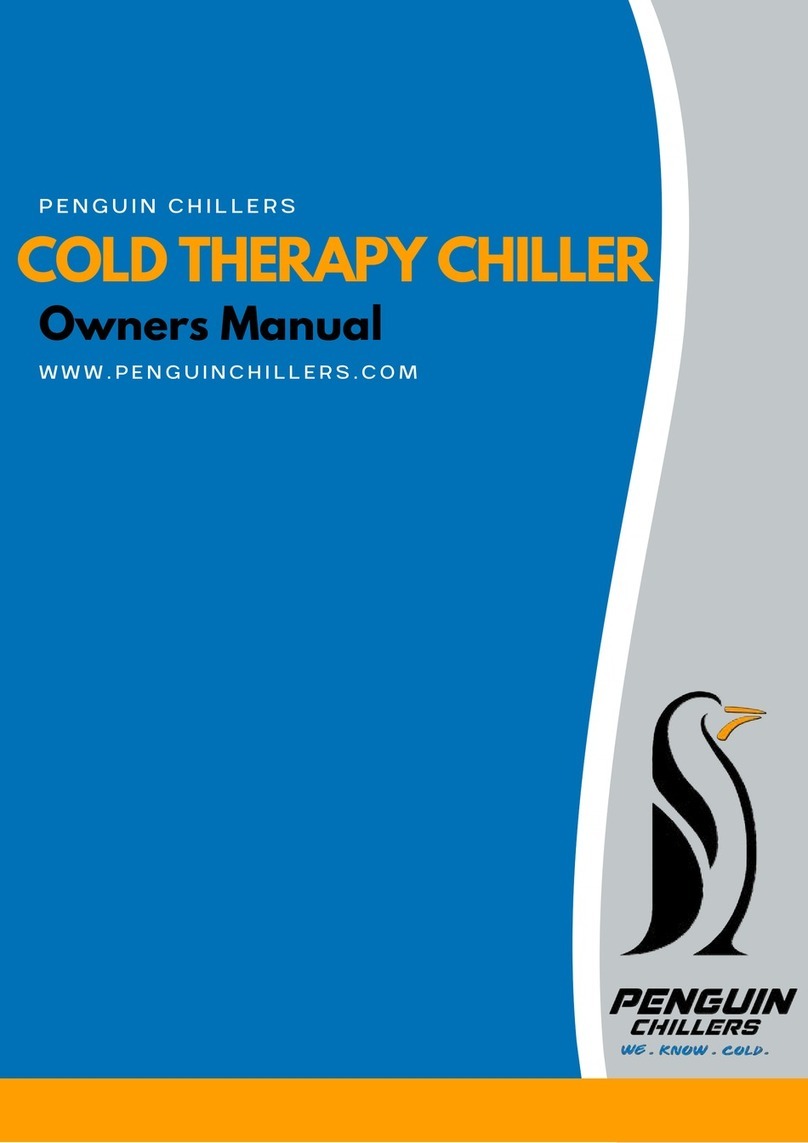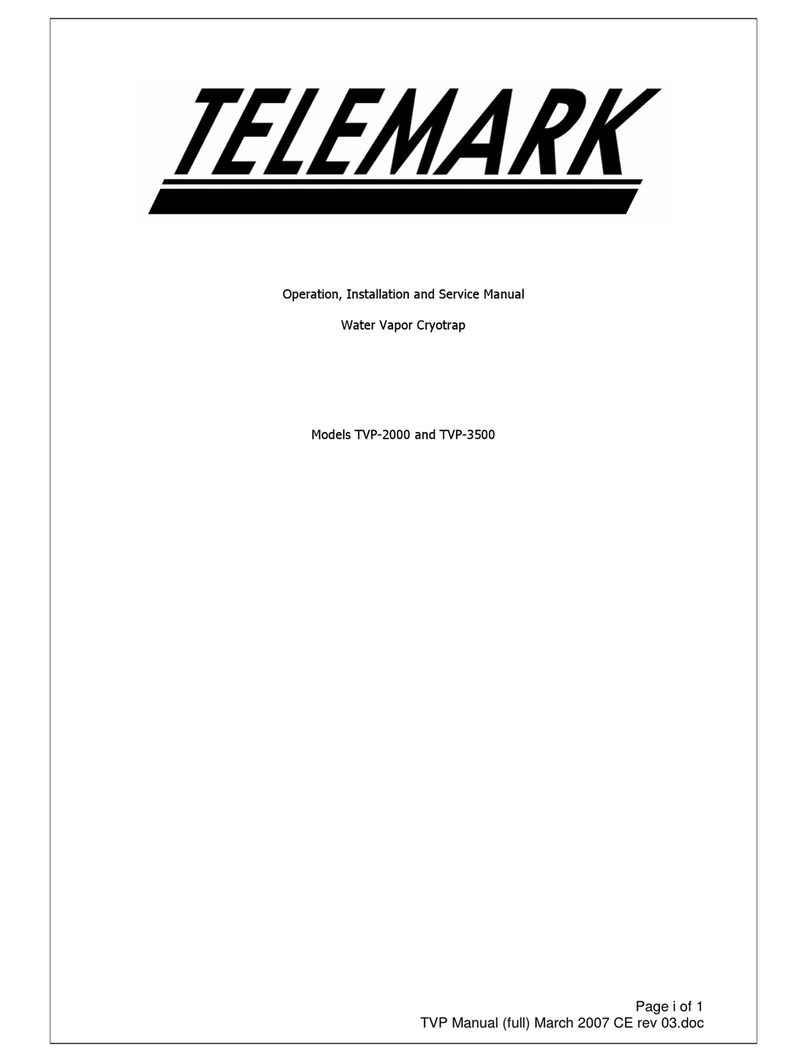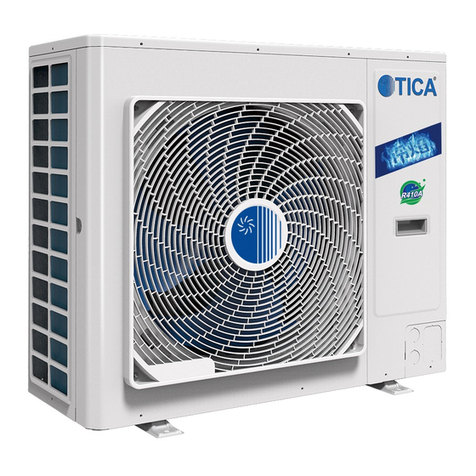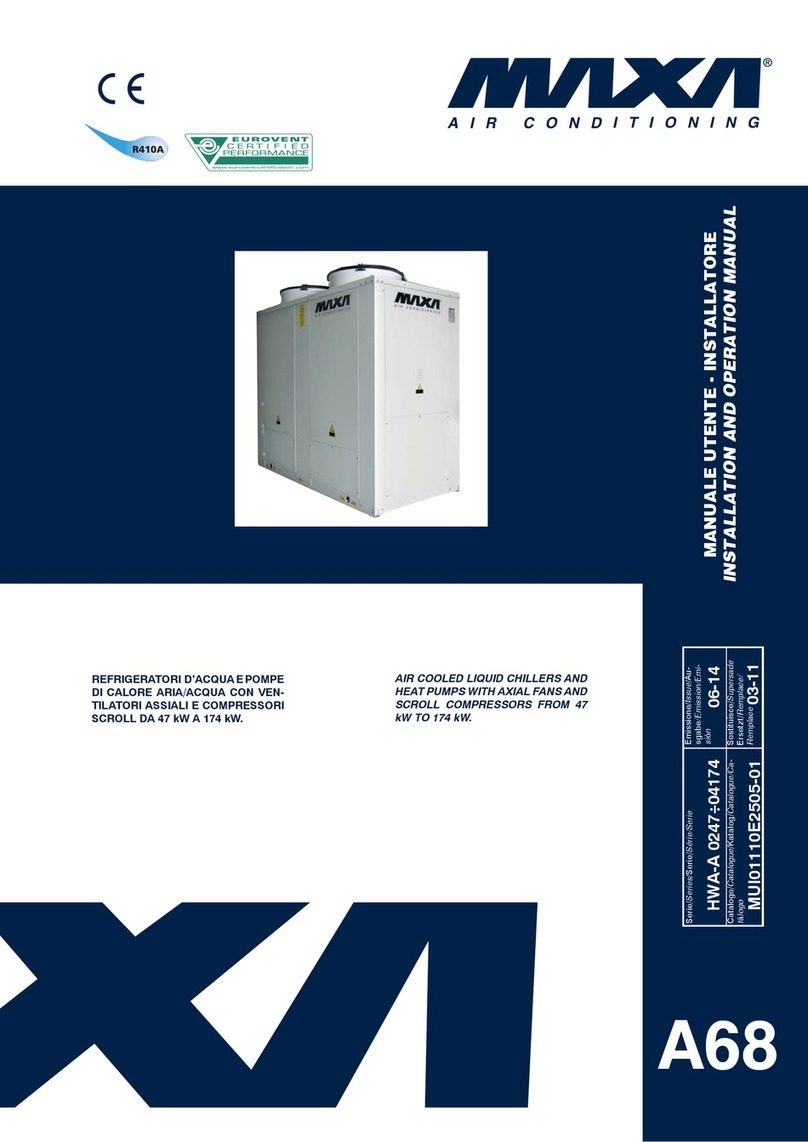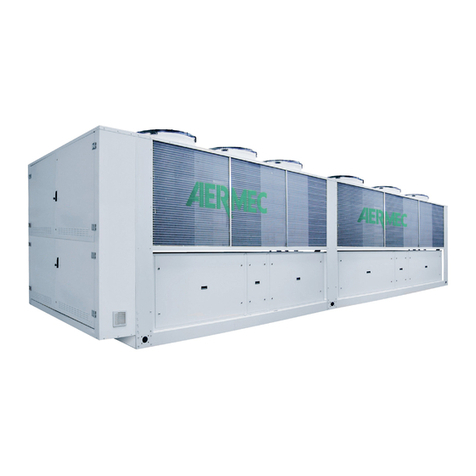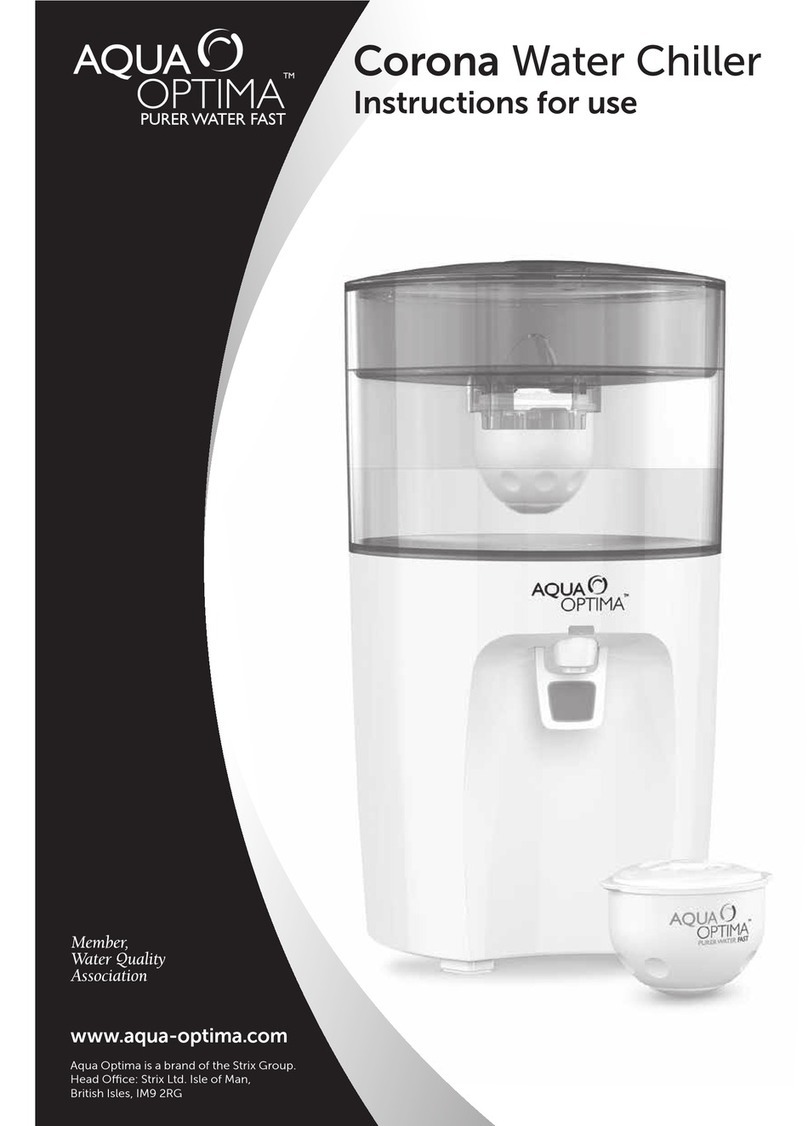a) Hard, level surface –Feet on the Mini provide a degree of friction on most work surfaces to prevent sliding.
A level surface is important for ensuring proper filling and allowing air to escape.
b) Clean, dust-free environment –air-cooled chillers move large volumes of air, and large amounts of air-
borne contamination will result in fouling of the condenser, reducing the capacity of the unit and in extreme
cases causing a system shut-down.
c) Non-condensing ambient –+5°C to +40°C (+39°F to +104°F). Capacity is lost above +30°C (+86°F).
d) Humidity - 80% for ambient temperatures up to +31°C (+88°F), decreasing linearly to 50% relative humidity
at +40°C (+104°F) ambient temperature.
e) Electrical supply –the Mini comes with a Switch Mode Power Supply capable of accepting;
a. Voltage fluctuations of ±10% of the nominal voltage.
b. Frequency of 47Hz to 63Hz inclusive.
c. Maximum current draw of 5.8A@100VAC; mains fusing is rated 6.3A, accessible from rear.
i. See product rating label for fuse specification.
ii. Two modes of supply are acceptable; L1 / N / E or L1 / L2 / E
iii. The inlet module itself is rated 10A 250V.
iv. Protective earth must be provided by user at IEC type C14 appliance inlet.
f) Clearance –left and right of the unit require clearance of ≥300mm (≥11.8”). Care must be taken to prevent
the recirculation of rejected hot air, back into the condenser. This will result in damage if repeated. Ensure
there is sufficient room at the rear of the product to remove the power cable without obstruction.
g) Plumbing –tubing, piping or hose must be clean and compatible with the fluid to be used. The chiller is
compatible with deionized water and water-glycol mixtures such as Hexid fluid.
h) Indoor use only –altitude up to 2000m.
i) Installation category –transient overvoltage category II; Pollution degree 2. Temporary overvoltages
occurring on mains supply are acceptable within limits defined in the aforementioned categories.
